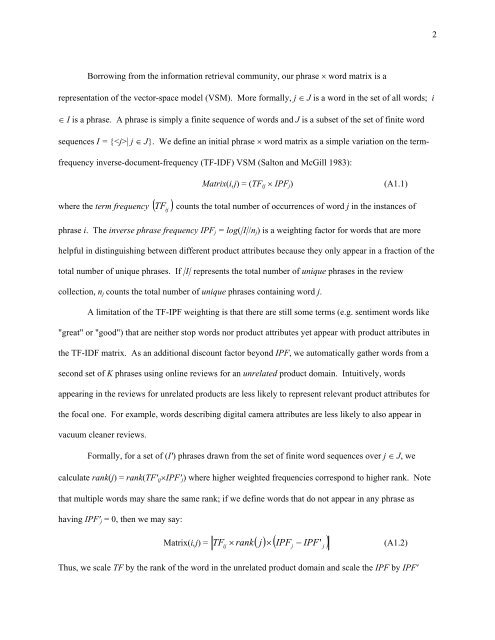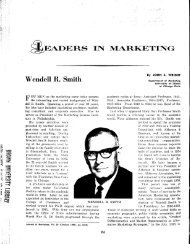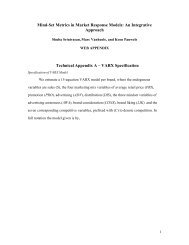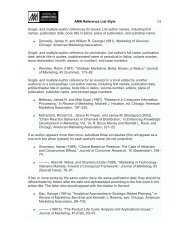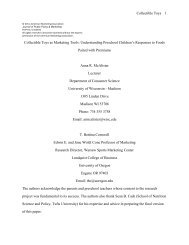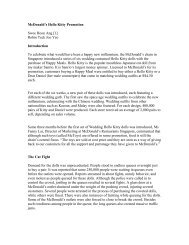Automated Marketing Research Using Online Customer Reviews
Automated Marketing Research Using Online Customer Reviews
Automated Marketing Research Using Online Customer Reviews
Create successful ePaper yourself
Turn your PDF publications into a flip-book with our unique Google optimized e-Paper software.
Borrowing from the information retrieval community, our phrase � word matrix is a<br />
representation of the vector-space model (VSM). More formally, j � J is a word in the set of all words; i<br />
� I is a phrase. A phrase is simply a finite sequence of words and J is a subset of the set of finite word<br />
sequences I = {| j � J}. We define an initial phrase � word matrix as a simple variation on the term-<br />
frequency inverse-document-frequency (TF-IDF) VSM (Salton and McGill 1983):<br />
Matrix(i,j) = (TFij � IPFj) (A1.1)<br />
where the term frequency �TF ij � counts the total number of occurrences of word j in the instances of<br />
phrase i. The inverse phrase frequency IPFj = log(|I|/nj) is a weighting factor for words that are more<br />
helpful in distinguishing between different product attributes because they only appear in a fraction of the<br />
total number of unique phrases. If |I| represents the total number of unique phrases in the review<br />
collection, nj counts the total number of unique phrases containing word j.<br />
A limitation of the TF-IPF weighting is that there are still some terms (e.g. sentiment words like<br />
"great" or "good") that are neither stop words nor product attributes yet appear with product attributes in<br />
the TF-IDF matrix. As an additional discount factor beyond IPF, we automatically gather words from a<br />
second set of K phrases using online reviews for an unrelated product domain. Intuitively, words<br />
appearing in the reviews for unrelated products are less likely to represent relevant product attributes for<br />
the focal one. For example, words describing digital camera attributes are less likely to also appear in<br />
vacuum cleaner reviews.<br />
Formally, for a set of (I') phrases drawn from the set of finite word sequences over j � J, we<br />
calculate rank(j) = rank(TF'ij�IPF'j) where higher weighted frequencies correspond to higher rank. Note<br />
that multiple words may share the same rank; if we define words that do not appear in any phrase as<br />
having IPF'j = 0, then we may say:<br />
Matrix(i,j) = TF rank�<br />
j��<br />
�IPF � IPF'<br />
�<br />
ij<br />
� (A1.2)<br />
Thus, we scale TF by the rank of the word in the unrelated product domain and scale the IPF by IPF'<br />
j<br />
j<br />
2


